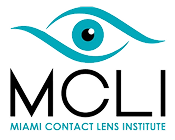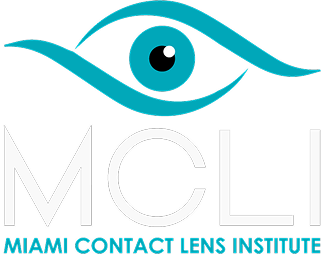Contact lenses are a convenient vision correction method that works quite well for millions of indivduals. However, the interaction between allergies and contact lenses can make wearing lenses challenging for some patients. People experience mild discomfort differently during an allergic flare-up; for some, it may feel quite bothersome, while for others, it causes little disruption.
Understanding how allergies interact with contact lenses can help manage symptoms effectively. At Miami Contact Lens Institute, we often encounter lens complications related to allergies, and we have explored various ways to assist our patients. With support from your eyecare practitioner and advanced lens alternatives, you can minimize your discomfort.
How Do Allergies Affect the Eyes?
Allergic reactions in the eyes typically occur when allergens such as pollen dust, pet dander, or mold come into contact with the ocular surface. The presence of an allergen triggers the immune system, releasing histamines, which cause increased blood flow and inflammation to fight the invading allergen. You may experience redness, itching, burning, excessive watering, stringy discharge, swelling, light sensitivity, and a gritty feeling.
For contact lens wearers, allergic responses can create an environment makes wearing their lenses difficult. Inflammation makes the eyes more sensitive and prone to irritation when lenses are inserted. During peak allergen seasons, such as spring, many people notice increased awareness of their contact lenses along with symptoms like eye discomfort and dryness. Furthermore, the natural response burning, tearing, itching and mucus production can further exacerbate discomfort and cause fluctuating vision.
Contact lenses can also trap allergens and debris, keeping them on the ocular surface for longer than they should be. Trapped allergens further increase irritation and prolong the allergic reaction. If patients are unable to remove their lenses, they may start rubbing their eyes, which releases even more histamine, making the reaction and symptoms even worse. Rubbing your eyes may provide a brief sense of relief from irritation. Yet, over time, it could lead to increased discomfort and further irritation.
Why are Soft Contact Lenses Difficult to Wear with Active Allergies?
Traditional contact lenses are designed to provide comfortable vision correction in ideal conditions. Standard soft contacts can absorb allergens. The buildup of airborne contaminants leads to constant exposure to the allergen causing the reaction.
Which Contact Lenses Work Best for People With Allergies?
At Miami Contact Lens Institute, we offer a range of lenses specifically designed to meet individual needs and address complex conditions. There are three main allergy-friendly contact lenses that we consider for patients struggling with severe allergic reactions. We will conduct a comprehensive examination of your eyes to determine which specialty lenses are suitable for you. The lenses we offer can be fully customized to ensure a perfect fit, improving patient comfort.
Rigid gas permeable (RGP) can be more comfortable to wear during allergic reactions. RGP lenses are also more durable and resistant to allergen deposits than soft lenses. With strict daily care and hygiene routines, wearing RGP lenses can minimize many of the issues caused by soft contact lenses.
Hybrid lenses are another alternative that combines the comfort of soft lenses with the protective benefits of RGP lenses. Hybrid lenses feature a smooth outer ring and a rigid center, which protects the delicate corneal tissue from deposit buildup. UltraHealth lenses are designed to circulate fresh tears beneath the lens with every blink, helping the eyes stay hydrated to naturally clear away small particles and potential irritants.
Scleral lenses are advanced specialty lenses that have a unique design, which makes them a wonderful option for a variety of complex eye conditions. Scleral lenses have a larger diameter than soft lenses, which makes the edge of the lens rest on the sclera instead of the cornea. The larger size covers more of the eye, protecting it from allergens and debris and also minimize friction by the blinking forces of the eyelids.
Scleral lenses are also shaped differently than other lenses because they vault over the cornea, creating a small space between the lens and the corneal surface. This reservoir is filled with a saline solution that continually bathes the eye, keeping it hydrated throughout the day. Scleral lenses can be removed, cleaned, and refilled with fresh, sterile saline, which can help reduce the irritation caused by allergens.
Find the Right Contact Lens Solution for Your Allergies
When it comes to managing itchy eyes with contacts, the doctors at Miami Contact Lens Institute have the knowledge and experience necessary to improve your quality of life. Our expert eye care practitioners have spent decades learning everything there is to know about caring for patients with conditions that make wearing usual vision correction methods challenging.
To find out more about potential contact lens discomfort solutions, contact us to schedule a consultation. Together, we will explore various ways to enhance your comfort and consider alternatives that best meet your needs. Allergies can be frustrating, but there are ways to help you enjoy year-round lens comfort and sharp vision!

.jpg)
